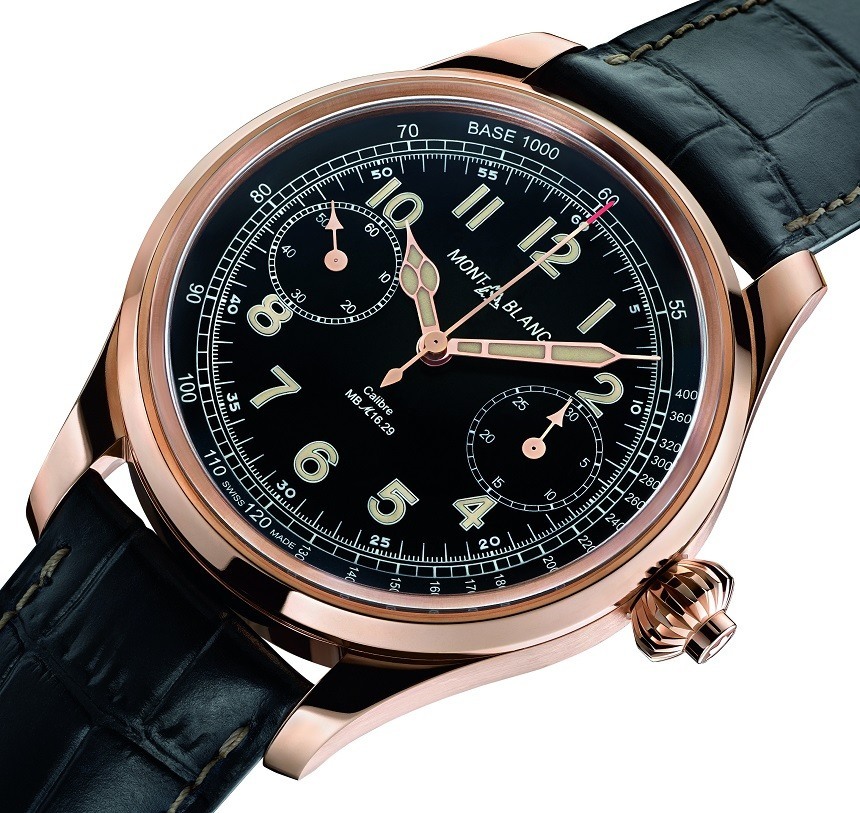
Watches released in celebration of an anniversary provide an excellent excuse to turn our minds to the past and gratuitously borrow design cues from a brand’s history. How close to the original the reinterpretation ends up being varies from brand to brand, and model to model. In the case of the Montblanc 1858 Collection, the Swiss brand producing fine watches out of Le Locle for generations, the 157th birthday of the company has been commemorated with a dollop of classical verve. The release of the Montblanc 1858 Chronograph Tachymeter Limited Edition, the Montblanc 1858 Small Second Limited Edition, and the Montblanc 1858 Manual Small Second introduces three new models that stand shoulder-to-shoulder with the current collection, and give consumers the opportunity to invest in something a little more traditionally styled.
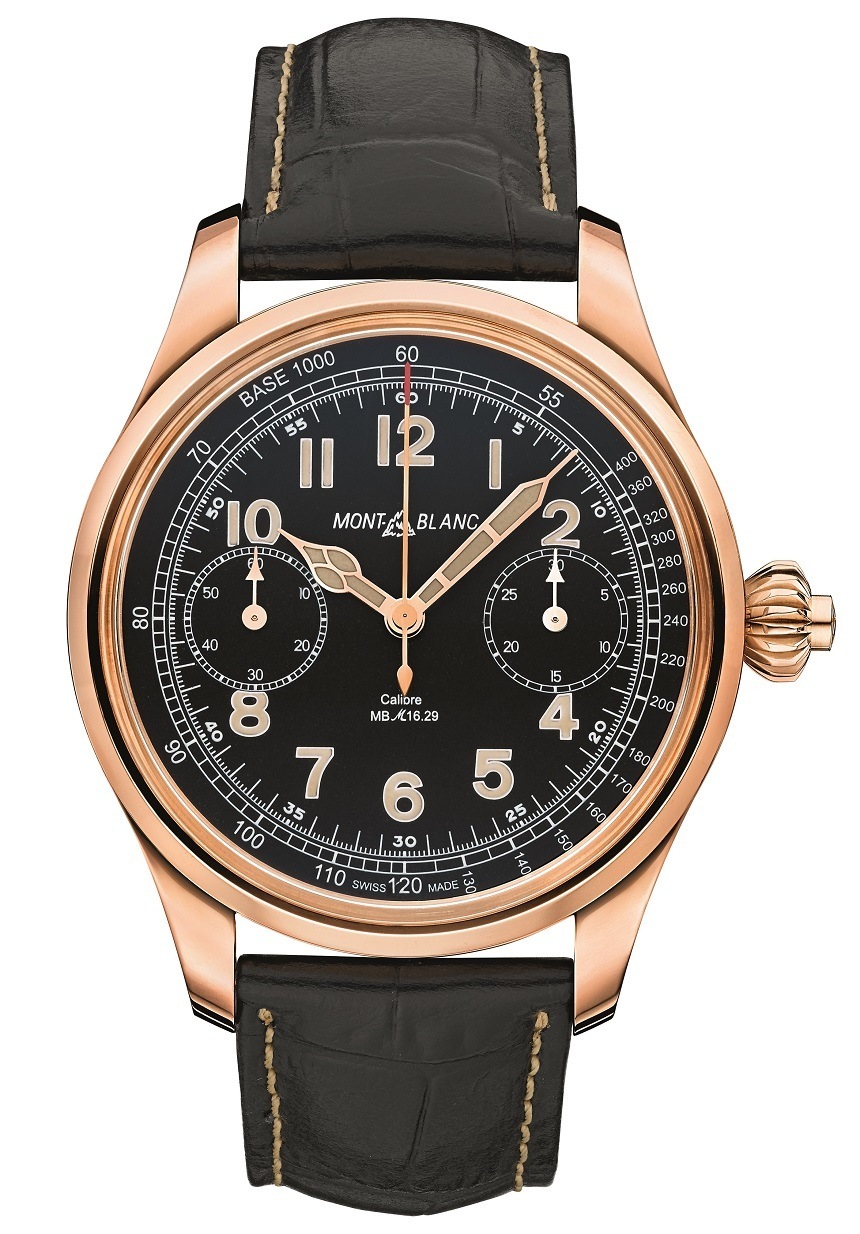
Montblanc have done a very nice job of updating a classic chronograph design of theirs from the 1930s. The mono-pusher chronograph is large, features a superbly weighted dial that is extremely legible as a result, a hefty 45mm 18kt rose gold case, and a hand-wound, in-house mechanical movement inspired by a pocket watch movement.
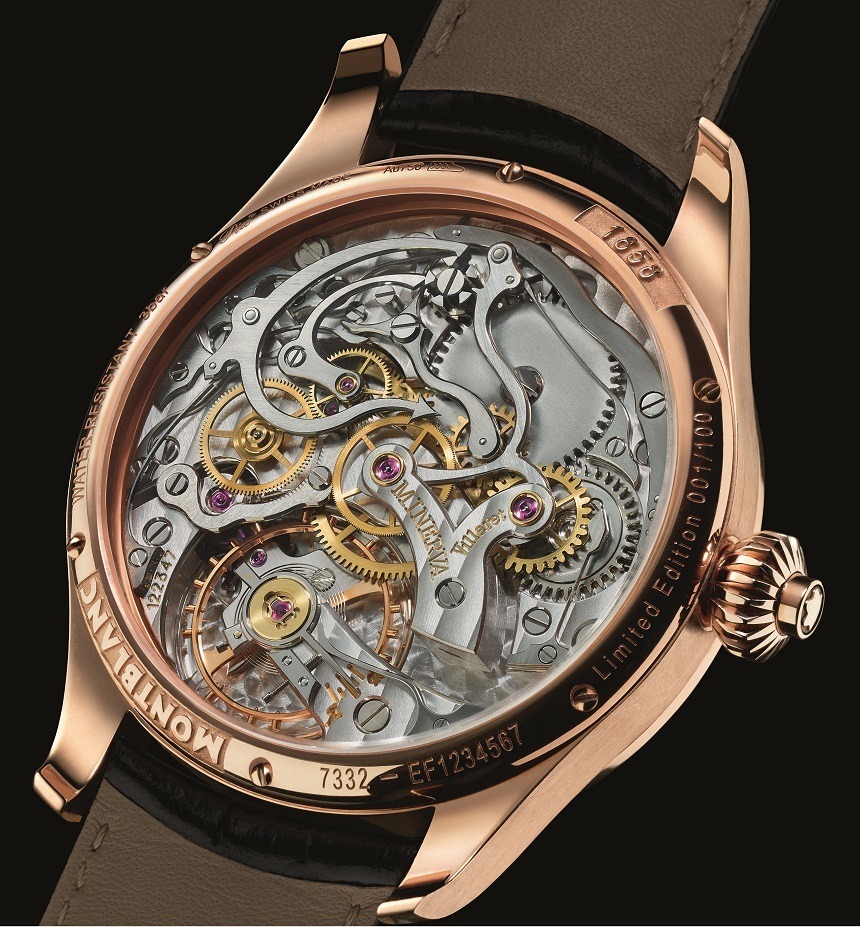
The calibre MB M16.29 echoes the past with its inclusion of a column wheel as the control component of the chronograph. In addition, the design and execution of the movement, which boasts a 50-hour power reserve, an 18,000vph, 252 components and 22 jewels, measures a whopping 38.4mm wide, which means it puts on quite the show for customers who are treated to a generous view of it ticking away through a display case back. The Montblanc 1858 Chronograph Tachymeter Limited Edition makes full use of its 44mm width, by employing a slim bezel to frame the rail-track tachymeter and the bicompax dial.
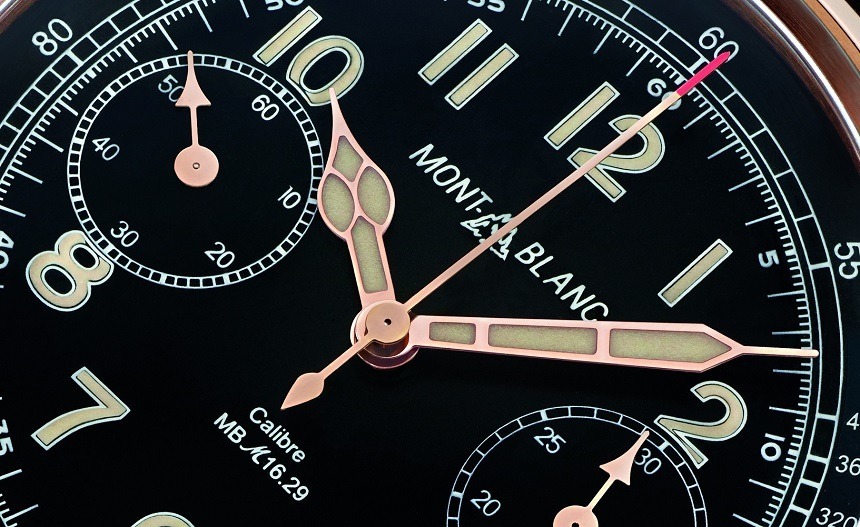
The red-tipped chrono seconds hand is started by depressing the pusher, which is hidden in the crown at three o’clock. Also displayed on the sub-dial at 3 o’clock is the chronograph minute counter, which runs up to half an hour. What I think is successful about this dial, is the way in which everything appears oversized, but is in fact of quite normal proportions. The Arabic numerals, thickly coated with Super-Luminova, look enormous, but meekly dip out of view when the sub-dials take center-stage. There’s no attempt to squeeze a bit of the 3 or the 9 onto the edge of the dial – it’s totally assured design, and it works nicely with this piece.
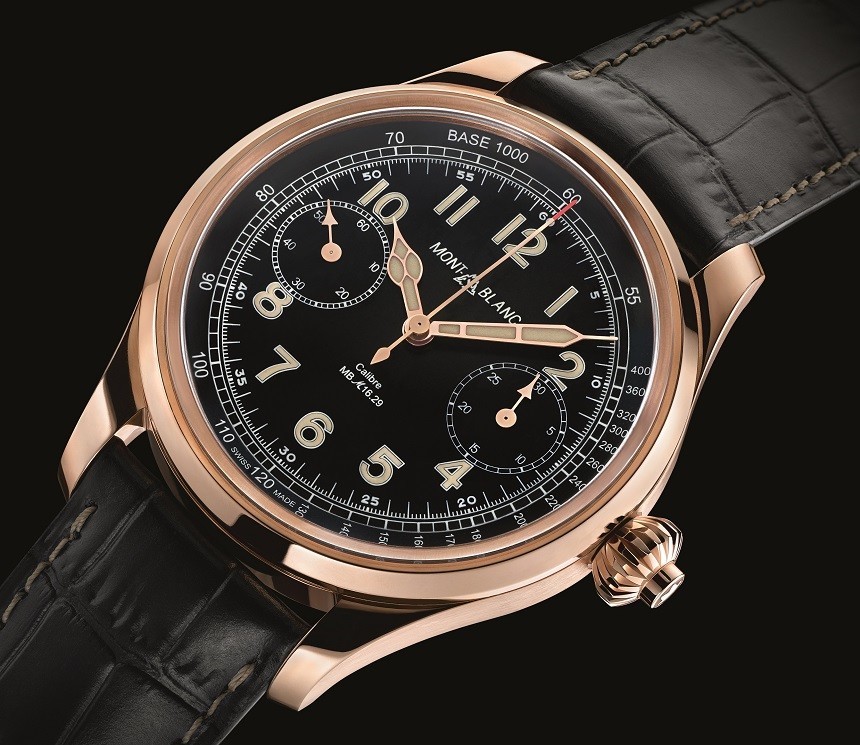
Montblanc has a long history (157 years to be precise), and its association with the Minerva movement manufacture is inextricably linked. Now an official part of the company, Minerva produce movements for the brands watches, stamping them with the name “Villeret,” which is a nod to their geographical origins. Another nod to the past can be seen in the use of the old Montblanc logo (which I had never even seen before this piece was released). The vintage color luminant, cathedral hands, thin, tapering lugs that maximise the dial size whilst maintaining wearabilty, are all signs of this watch’s predecessor’s times. The large crown, too, one of the most obvious components, was installed to make it easier for pilots, who would use a large, legible watch of this nature, to operate while wearing flight gloves.
